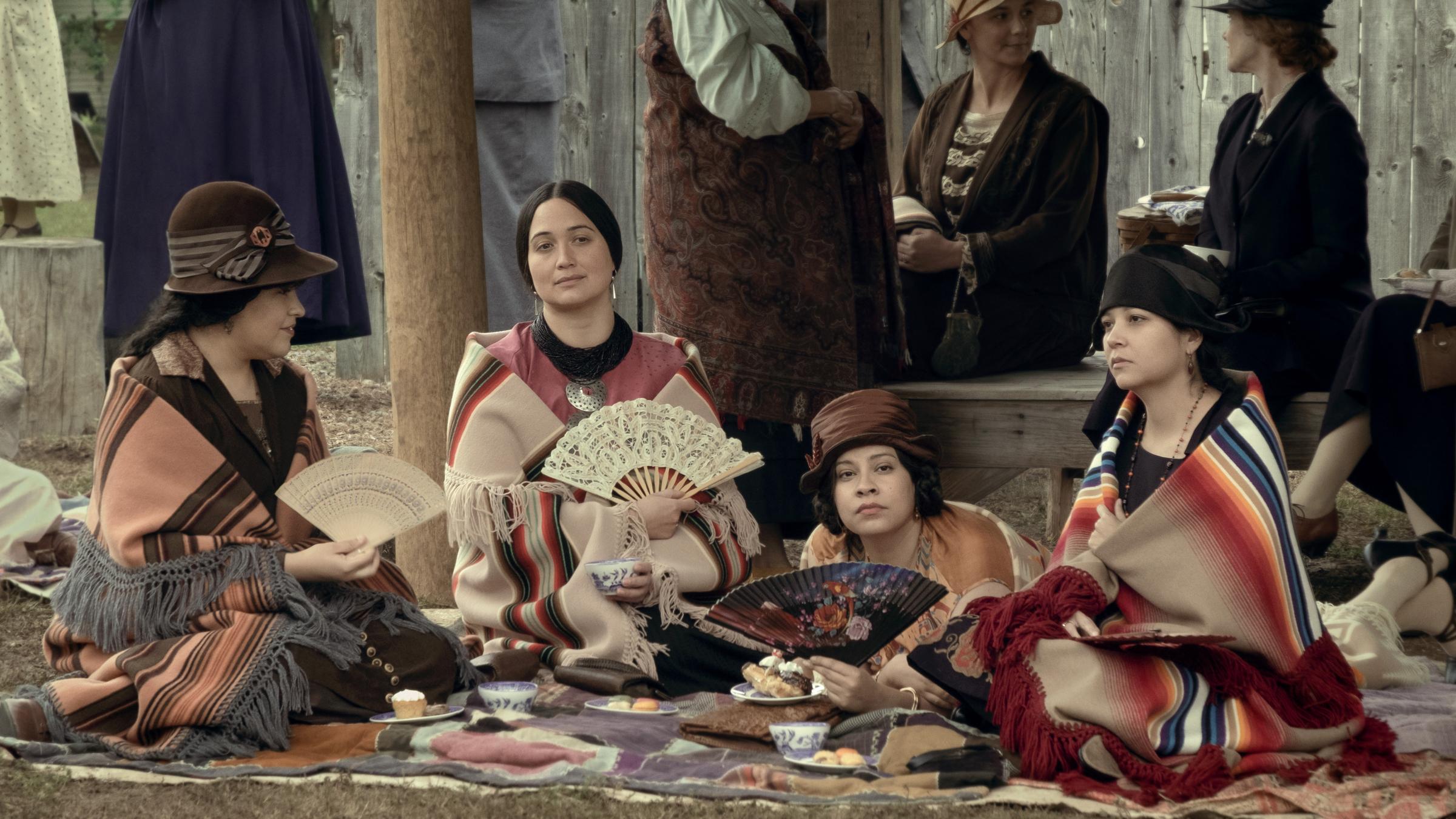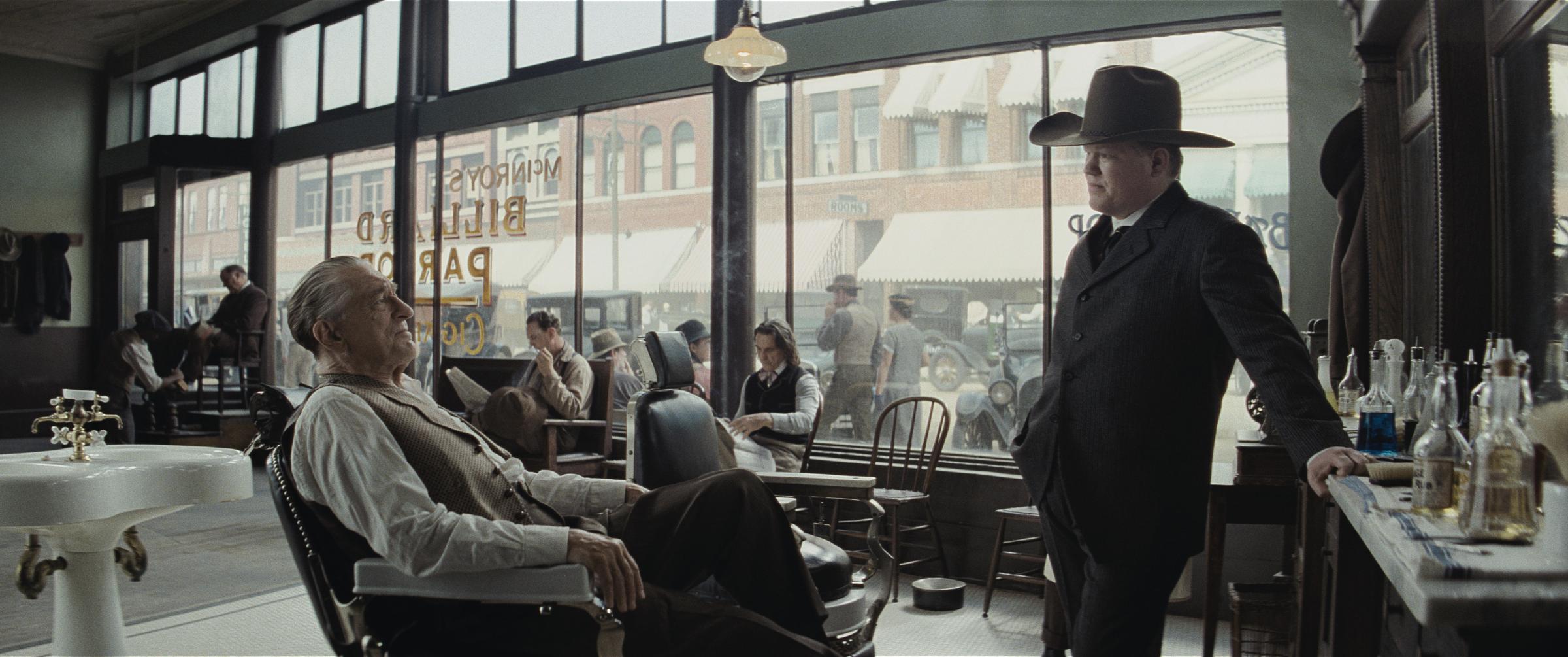Warning: This post contains spoilers for Killers of the Flower Moon.
Based on journalist David Grann's 2017 best-selling book of the same name, Killers of the Flower Moon recounts the true story of how a white businessman and self-proclaimed "true friend" of the Osage Nation orchestrated the brutal murders of numerous members of the tribe in early 1920s Oklahoma.
Directed and co-written by Martin Scorsese, the film centers on the relationship between an Osage woman, Mollie Kyle (Lily Gladstone), and white World War I veteran, Ernest Burkhart (Leonardo DiCaprio), nephew of the aforementioned wealthy rancher, William K. Hale (Robert De Niro). Set at a point in time when the Osage were considered the richest people per capita in the world following the discovery of oil reserves under their land, the movie follows Ernest as he marries Mollie at the direction of his uncle and then conspires with him to kill off Mollie's family and a number of other Osage in order to cash in on their oil headrights and life insurance policies.
Grann's book reads as a whodunnit mystery that explores the broader historical context of what came to be known as the "Reign of Terror"—including how the crimes against the Osage were investigated and partially solved by a team of government field agents led by former Texas Ranger Tom White (played by Jesse Plemons in the movie). But in adapting the book, Scorsese said that he wanted to shift the spotlight away from "all the white guys" and make Mollie and Ernest's marriage the driving force of the film.
"What I wanted to capture, ultimately, was the very nature of the virus or the cancer that creates this sense of a kind of easygoing genocide," he said at an Oct. 16 press conference. "When there is betrayal that deep, and we know for a fact that it was that way, there's our story."
Here's how faithfully Scorsese's version of the Killers of the Flower Moon story captures the real history behind the Osage murders.
Read more: Martin Scorsese Still Has Stories to Tell
The headright system
In 1906, nearly 45 years after the Osage Nation had legally purchased and settled on a permanent reservation in north central Oklahoma Indian Territory, Osage Principal Chief James Bigheart and a half-Native lawyer named John Palmer negotiated a deal with the U.S. government wherein every full-blood Osage received an allotment of 657 acres of land that included a headright in the tribe's communal mineral trust. While surface property could be sold or leased, the deal stipulated that mineral trust headrights—the right to receive a quarterly distribution of funds from the tribe's underground mineral estate—could only be inherited by their owner's legal heir.

This meant that when oil fields were discovered under the reservation just a few years later, the Osage became some of the wealthiest people in the world. However, there was a catch: the Osage were not free to spend their own money.
The U.S. government put a system of guardianship in place, under which any Osage who was deemed "incompetent" was assigned a guardian (almost always a white man) who controlled their money. The system often resulted in guardians withholding or outright stealing money from the Osage.
The movie shows Mollie visiting her guardian to request access to her own money to pay medical bills.
The marriage of Mollie and Ernest
As is shown in the movie, Ernest met Mollie while he was working as a taxi driver in Osage County. They married in 1917 at Hale's urging and eventually had three children together, Elizabeth, James "Cowboy," and Anna. Years later, while Ernest was on trial, Anna died at the age of 4 after contracting whooping cough.
The film depicts Mollie and Ernest as having a loving relationship even as he was conspiring to murder her family. While it's impossible to know how Ernest and Mollie truly felt about each other, Scorsese said that it was the couple's real-life granddaughter, Margie Burkhart, who convinced him that their marriage should be the heart of the movie.

"She said we have to remember that Ernest loved Mollie, and Mollie loved Ernest," he said during an Oct. 16 press conference. "It's a love story. So what happened was the script shifted that way and it became gritty."
However, the suggestion that Ernest actually loved Mollie is controversial to some involved in the project. At the film's premiere, Osage language consultant Christopher Cote told the Hollywood Reporter that, as an Osage himself, he was hoping Killers of the Flower Moon would be told from the perspective of Mollie and her family.
"I think it would take an Osage to do that," he said. "Martin Scorsese not being Osage I think he did a great job representing our people. But this history is being told almost from the perspective of Ernest Burkhart. And they kind of give him this conscience and they kind of depict that there's love. But when somebody conspires to murder your entire family, that's not love. That's beyond abuse."
The Reign of Terror
The Reign of Terror began in 1921 with the deaths of Mollie's sister Anna Brown (played by Cara Jade Myers) and Charles Whitehorn (Anthony J. Harvey), who were both found shot in the head in remote rural areas within a short time of each other. Over the course of the next four years, at least 24 members of the Osage Nation and their allies—including Mollie's mother Lizzie (Tantoo Cardinal), sisters Minnie (Jillian Dion) and Rita (JaNae Collins), brother-in-law Bill (Jason Isbell), and cousin Henry Roan (William Belleau)—died violent or suspicious deaths.
The movie shows Ernest slowly poisoning Mollie, who was diabetic, by giving her injections of what she was told was insulin to keep her weak and wasting away in bed during the later years of the Reign of Terror, an alleged attempt on her life that Mollie survived.
The FBI investigation and trial
When Rita and Bill Smith and their housekeeper Nettie Brookshire (Shonagh Smith) were killed in an explosion at their home in 1923, it prompted the Osage Tribal Council to appeal to the federal government for help.
It was at this point in time that the newly created Bureau of Investigation (the agency that would later become the FBI) assigned White to the case and it became the Bureau's first murder investigation. White led a team of field agents, several of whom went undercover in the community, to gather evidence and uncover the truth: that Hale, along with a number of accomplices, had orchestrated the murders of over 20 Osage as part of a scheme to profit off their deaths. Hale's accomplices included Ernest and his brother Bryan (Scott Shepherd) as well as a a lineup of local career criminals.

After both Hale and Ernest were arrested in January 1926 for the murders of Rita, Bill, and Nellie, Ernest ended up confessing to his role in the crimes and identified Hale as the mastermind of the plot. He also named local thief and bootlegger John Ramsey (Ty Mitchell) as Henry Roan's killer. That April, another local bootlegger, Kelsie Morrison (Louis Cancelmi), and Bryan Burkhart were charged with Anna's murder.
Drawn-out and arduous legal proceedings ensued, with Ernest agreeing to testify for the prosecution in the Smiths' murder before being intimidated into instead testifying for the defense before once again changing his mind, pleading guilty, and testifying for the state.
Ultimately, Ernest, Hale, Ramsey and Morrison were all sentenced to life in prison—Ernest for Rita, Bill, and Nellie's murders; Hale and Ramsey for Henry Roan's; and Morrison for Anna's. However, Ernest, Hale, and Ramsey were all eventually paroled and, in 1966, Ernest received a full pardon from Oklahoma governor Henry Bellmon.
Mollie, who stood by her husband until he confessed to his role in her family's murders in court in 1926, divorced Ernest and later got remarried to a man named John Cobb. She died at the age of 50 in 1937.
Systemic violence
While Hale was suspected of being the mastermind behind the 24 murders that took place during the Reign of Terror, the Killers of the Flower Moon book delves into how deadly violence against the Osage was part of a more sweeping conspiracy. In fact, Grann's research indicates that in the years before Anna Brown's death and the years after Hale went to prison, there were numerous other Osage who died under mysterious circumstances—and their deaths were never investigated.
“I thought I was writing a book about this singular evil figure who had been apprehended by the FBI,” Grann told Smithsonian Magazine. “Instead, I began to realize that this was less a story about who did it and who didn’t do it. It was really about a culture of killing and a culture of complicity… [with] many of these murders carried out by individuals who were profiting from this very corrupt system of targeting the Osage, often marrying into their families and then plotting to kill them to steal their oil money and inheritance.”
"behind" - Google News
October 21, 2023 at 04:57AM
https://ift.tt/C2ozXjh
The True Story Behind 'Killers of the Flower Moon' - TIME
"behind" - Google News
https://ift.tt/GZhCUJk
https://ift.tt/Io1pfWA
Bagikan Berita Ini















0 Response to "The True Story Behind 'Killers of the Flower Moon' - TIME"
Post a Comment